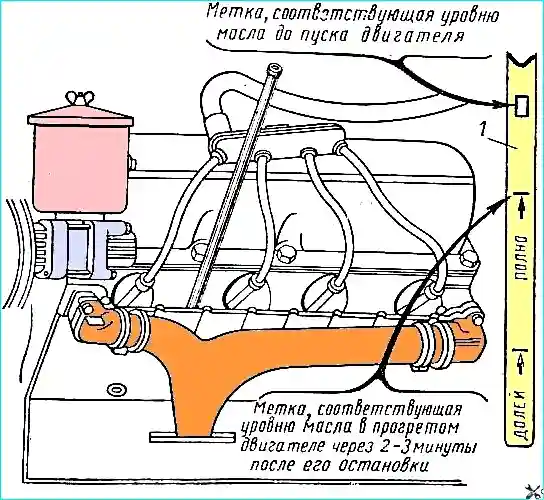Oil is used to lubricate the engine; specified in the lubrication chart.
Check the oil level in the crankcase using the dipstick, which has three marks on it:
"Fill", "Full", and a rectangular mark above the "Full" mark (Fig. 1).
"Full" mark shows the normal oil level in the crankcase of an engine warmed up to operating temperature, 2-3 minutes after stopping.

The oil level in the crankcase should be checked before each vehicle departure, and during long trips during each vehicle inspection en route.
To check the oil level, stop the engine, wait 2-3 minutes for the oil to drain, remove and wipe the oil level indicator, insert it all the way, remove it again and determine the level using the marks.
If the oil is below the “fill” mark, the vehicle must not be used and it is necessary to add oil up to the “Full” mark.
When the vehicle is parked for a long time, some additional oil flows from the oil filter and channels in the cylinder block into the crankcase, so the oil level before starting the engine exceeds the “Full” mark and in a fully filled engine is set within the rectangular mark on the indicator.
When checking the oil level before starting the engine after a long period of parking, the normal level should be within the rectangular mark marks.
Exceeding the normal level, corresponding to the "Full" mark on a hot engine or the rectangular mark on a cold one, is not allowed.
The engine oil must be changed at intervals specified in the lubrication chart.





